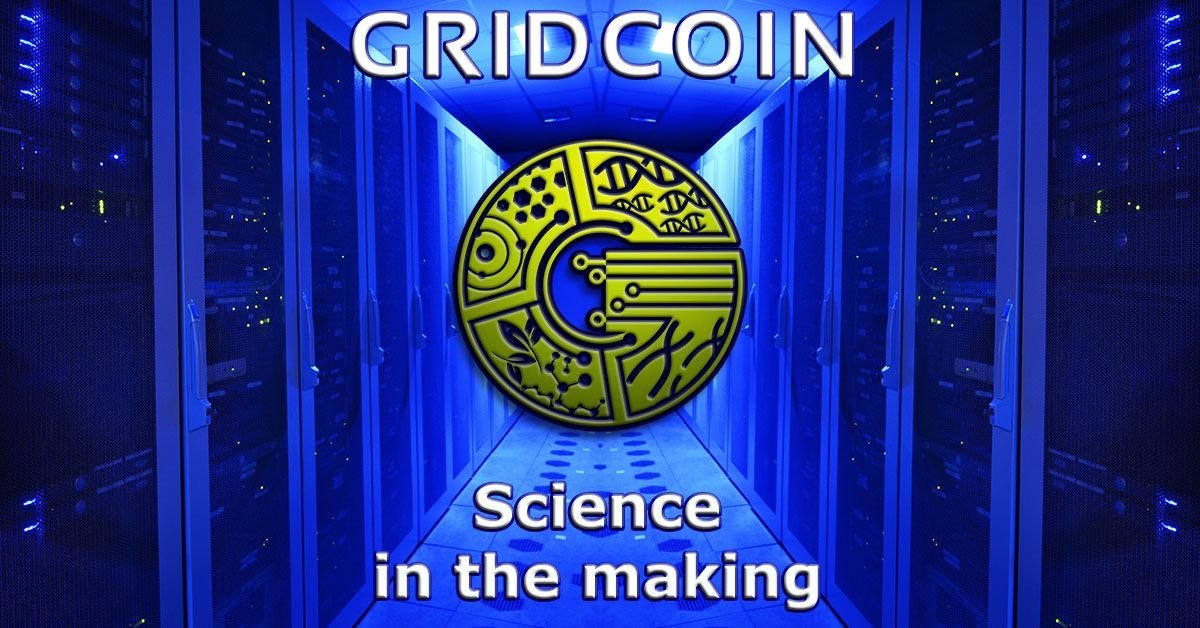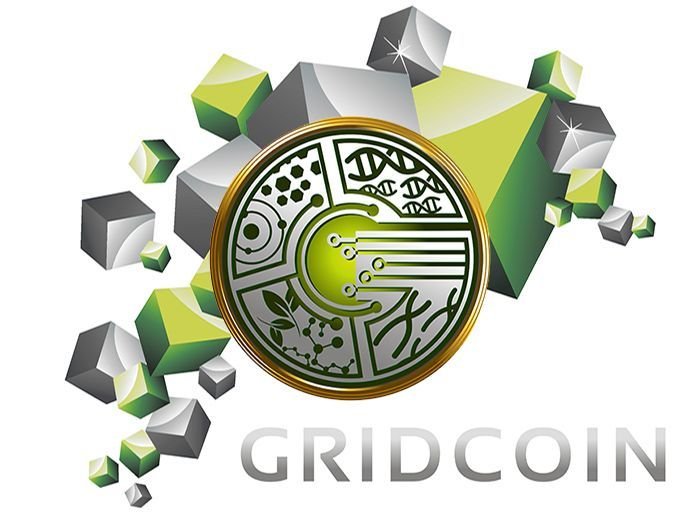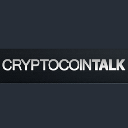
Welcome to all the new users of our Community
During the past weeks Gridcoin has gained some great traction. There has been many posts on the #gridcoin tag, as well as on the Beyond Bitcoin Hangout shows. Due to this the community has grown with many new users; both cryptoveterans but also with very novice beginners dipping their toes in the pool of cryptocurrency for the first time. With this post I wish to write about what Gridcoin is all about.
If any questions remain after the article, post a comment at the bottom for the community to answer.

Berkeley Open Infrastructure for Network Computing

Pronounced /bɔɪŋk/ – rhymes with "oink"
The BOINC software was developed in University of California, Berkeley. The first release was made 10 April 2002, 15 years ago.
- Works on multiple platforms including Windows, macOS, Linux, Android and FreeBSD
- Is an open-source program and has a public GitHub repository
- Licensed under the GNU Lesser General Public License

The BOINC manager
The BOINC manager is the program that attaches projects to the current account and computer. There is a wide variation of distributed projects that can be attached.
Projects can be attached in two ways
- No central manager
By attaching a project directly in the manager on each computer. Either sign up or login if you have a login since before, directly in the manager. Needs to be managed on each computer. - Using a central manager
By attaching a manager like BOINCstats on each computer. Signup on their webpage and login on new computers. Can be managed online.
Projects
There is a large amount of projects available to attach to the manager. The BOINC webpage has a detailed list of many of these projects, but isn't as updated as the BOINCStats Project status list that has less information.
Some of the most know projects are SETI@Home, World Community Grid, Rosetta@home and Asteroids@home.
- World Community Grid runs a variation of applications to find cures for Zika, AIDS, Tuberculosis, Ebola as well as Mapping Cancer Markers.
- SETI@Home runs analyzes of radio signals from outer space.
- Rosetta@Home designs proteins for fighting various deceases.
- Asteroids@Home maps details about asteroids in the universe since most are not detailed today.
There are as said many many more projects that can be attached, so go out and read about them all.
Distributed Project Application
Whenever you attach a project to your manager it will start to download a set of files to your computer. These files will be the application that is used for analyzing the datasets that are sent over as well. The size of the data that are needed to analyze can vary from a few minutes to a few days depending on project and computer.
Once the application is done with analyzing the data it will submit the results to the projects servers again. Once the data is verified you will gain a credit score for it. This credit score varies widely from project to project and can not be compared with each others.
BOINC Webpage
BOINC GitHub Repository
BOINCStats
Wikipedia - BOINC

Gridcoin Research

Gridcoin Research is a cryptocurrency wallet. It's based on Proof of Stake and Distributed Proof of Research.
It was Created by Rob Halförd in 2013 as a Proof of Work wallet. By the end of 2014 the wallet went to the current system as a Proof of Stake wallet.
- Works on multiple platforms; Windows, Linux and macOS.
- The development is open-source and available on GitHub.
- It's licensed under the MIT License
Blocks and Blockchain
As most other cryptocurrency networks it's based on a chain of blocks, the blockchain.
Each block has a set of data in it, most commonly is transactions from one wallet to another wallet. Every time a wallet generates a block it will also make sure to record the previous blocks identification, making sure the chain is secure and linear.
Proof of Stake (POS)
This means that every block on the blockchain is created based on how much coins that your wallet has out of all active cons (your stake of the whole). Simplified you can say that if the network has 1000 active coins and you have 100 coins, you have a chance of 1 in 10 to stake the next block.
Once your wallet stakes a block your coins are put inactive and will not be counted towards the whole networks active coins for about 16 hours.
Compared to the way Bitcoin and other Proof of Work (POW) coins, Proof of Stake doesn't consume any processing power in itself and is environmentally friendly and goes in the ideas of Gridcoin.
For everyone that holds any amount of coins in a wallet you are rewarded 1.5% Interest APR, and does not require you to use BOINC to gain DPOR.
Distributed Proof of Research (DPOR)
For anyone interested in anything more than earning the base 1.5% Interest APR can run BOINC.
To keep everything simplified we will look on a few things in this sections.
- BOINC: Recent Average Credit (RAC)
- Gridcoin: Magnitude
BOINC: Recent Average Credit (RAC)
For each project that you do distributed work on you gain credit. Over a time you gain something called RAC. This score is calculated on a formula created by the projects BOINC server and decays over the course of 2 weeks.
Gridcoin: Magnitude
Magnitude is the Gridcoin equivalent of RAC. The RAC from BOINC is what the Gridcoin wallet use to calculate a users share of the project and how much to give out on a staked block. This is where it can become a little complicated, but we will try to cover this part as logical as possible.
Lets say we have project X, and we calculate your Magnitude for this project.
- Your RAC score for Project X is 1450.
- Project X is popular and all users combined has a total RAC of 50 000.
- Your Project share is 1450/50 000 = 2.9%
All projects share a reward pool of 115 000 magnitude shares, equally distributed. This means that if there are less projects each project gets more shares and vise versa. Currently we have 25 projects, this means that our Project X has 4600 Magntiude shares to give out.
- Your Magnitude share is then 4600 * 2.9% = 13.34
This is calculated for each project that you have a RAC score with and summarized up to a total sum of Magnitude share.
There is a fixed amount of Gridcoin that the network "wants" to give out for research reward today, this means the network will self regulate how much a Magnitude share is worth. Today it is worth 0,25 GRC per Day.
Based on this your reward is 13.34 * 0.25 = 3.335 GRC per Day
Researcher Beacons
To make sure the network knows about you and your work you have to send out a beacon, something saying that you exist and that your wallet is the one to receive your DPOR reward. Your wallet will do this automatically once your system is up and running with both the wallet and BOINC, but can also be done manually.
Your reward will accumulate for up to 6 months and will be paid out to you when your wallet stakes a new block. The more coins you hold the faster you will stake new blocks, as we talked about in the section of POS. To make it easier for new users to gain some coins without having to go trough the process of advertising themselves on the network there is a Gridcoin Pool that pays out daily.
Running BOINC on multiple computers
You can run BOINC on multiple locations, you only need to run the Gridcoin Research wallet on one system tough. The system that runs the wallet needs to have BOINC installed and all projects that you do work on attached to it. It does not need to do any work, but it is required for the wallet to know what your BOINC ID, called a Cross Project ID (CPID)


This ends this ELI5 tutorial about Gridcoin Research and BOINC for today. I hope you're understanding for Gridcoin has improved with it. Know that we are a welcoming community based on many different places such as IRC, Telegram, Steemit and Mumble. Check out the links below.
Don't forget to visit the #Gridcoin substeemit! Plenty of text based content being created there every day!
More info: @cm-steem/gridcoin-securely-rewarding-boinc-computation-on-top-of-pos/
 |  |  |  |  |
|---|


Vote @sc-steemit for witness on Steemit.com
Proud Supporter of the Cryptocurrency Gridcoin
| Latest Witness Update | Voting Guide | What a witness does |
